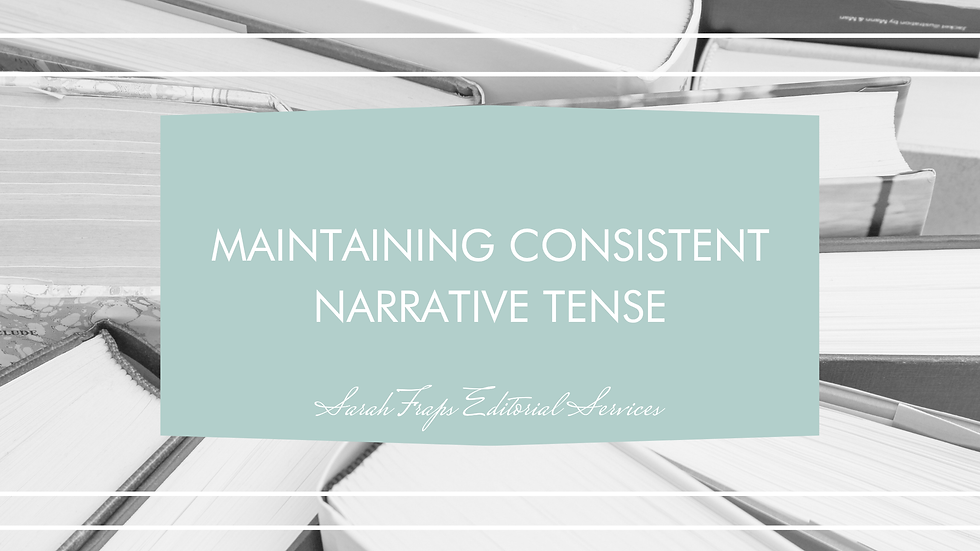Building tension and suspense in your writing
- Sarah Fraps

- Aug 15
- 3 min read
Updated: Aug 21
Effective use of tension and suspense are the beating hearts of a compelling story. They keep readers turning pages, desperate to know what happens next. While the terms are often used together, they aren’t identical: tension is the sense of unease or anticipation built throughout a scene or story, while suspense is the emotional payoff—when readers know something is coming but must wait for it to arrive.

Classic literature offers some of the finest examples of how to weave these elements into your writing. By studying how great authors keep readers hooked, you can learn to create that irresistible “just one more chapter” effect.
The rest of this blog post will explore six techniques for increasing tension and suspense (and thus, reader engagement) with examples from familiar stories.
1. Controlling the flow of information
One of the most effective ways to build suspense is by controlling what the reader knows—and when they know it. Reveal too much too soon and tension fizzles. Reveal too little and confusion sets in. The sweet spot is giving the reader just enough to make them curious but withholding the critical detail that will resolve the conflict or mystery.
Example: The Turn of the Screw by Henry James
In this novella, the governess narrator is unreliable, and James carefully withholds whether the apparitions are real or hallucinations. The reader’s uncertainty, therefore, becomes a source of constant tension as they are forced to interpret the events of the narrative through a haze of doubt.
2. Short-paced scenes
Long, meandering paragraphs create a relaxed pace for readers, but short, clipped sentences and quick scene changes accelerate the pace and amplify tension. When the pace speeds up, readers feel the urgency the characters feel.
Example: The Hound of the Baskervilles by Sir Arthur Conan Doyle
In key moments—such as the hound’s eerie howling across the moors—Doyle uses short, staccato bursts of description. Each moment arrives like the beat of a drum, quickening the reader’s pulse as the characters move toward the final confrontation.
3. Foreshadowing
Foreshadowing (see my recent post on this topic) plants seeds of unease in a reader’s mind. When done well, it creates a constant hum of tension beneath the narrative by reminding readers that danger, loss, or revelation lies ahead.
Example: Wuthering Heights by Emily Brontë
From the first chapters, Brontë’s use of gloomy weather, locked rooms, and violent tempers hints that her narrative is not a happy love story. Even in quieter scenes, the setting itself keeps readers on edge, wondering what lies in store for the characters.
4. The ticking clock and imminent threats
Deadlines, ticking clocks, and looming dangers force characters into high-stakes decision-making—and readers, especially in a close narrative, feel the same pressure and the suspense of whether the climax will ultimately bring resolution.
Example: A Tale of Two Cities by Charles Dickens
As the French Revolution rages, Dickens places Sydney Carton on a race against time to save Charles Darnay from the guillotine. Every passing moment tightens the noose, literally and figuratively, until the climactic sacrifice.
5. Purposeful misdirection and red herrings
Suspense thrives when readers think they know where the story is going—only to be led somewhere else entirely. A well-placed misdirection keeps them off balance, suspended and eager for resolution. (Though use misdirection and red herrings sparingly—they can quickly become frustrating for readers if overused.)
Example: Rebecca by Daphne du Maurier
The novel leads readers to believe Rebecca is a flawless, beloved figure—until the truth of her cruelty surfaces. Every assumption the narrator and the reader make is gradually dismantled, deepening the tension.
6. Withholding resolution
One of the most tantalizing techniques is to delay the answer to a central question posed by the story. By leaving conflicts unresolved for just a little longer, you stretch the reader’s anticipation like a taut string (the very definition of suspense!).
Example: Great Expectations by Charles Dickens
For much of the novel, Pip—and the reader—believe Miss Havisham is his mysterious benefactor. Dickens sustains this misunderstanding until the revelation can land with maximum emotional force.
Tension and suspense are less about shocking events and more about the deliberate control of information, pacing, and emotional stakes. Whether you’re penning a fantasy or a contemporary thriller, the same principles apply: Keep the reader leaning forward, wondering, worrying, and needing to know, and they'll have a tough time putting your book down!








Comments